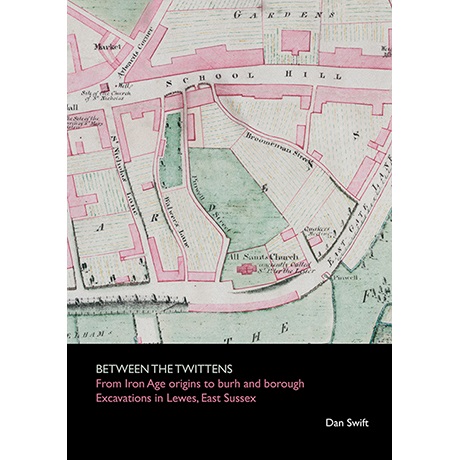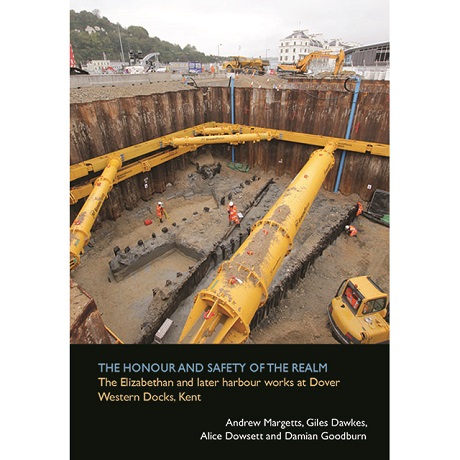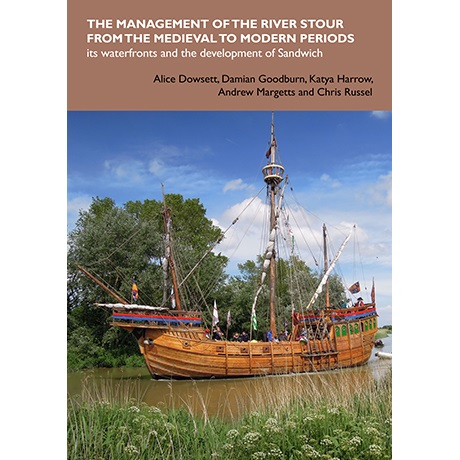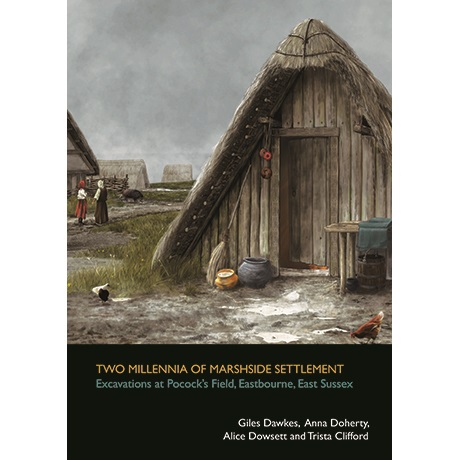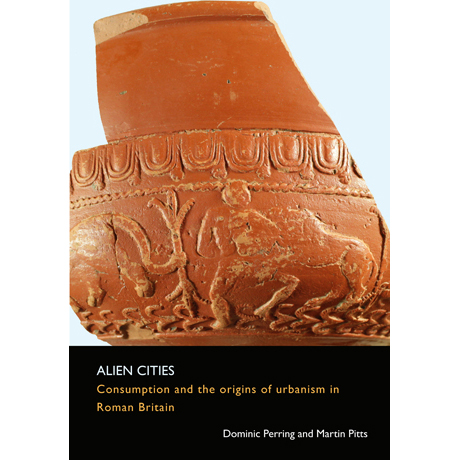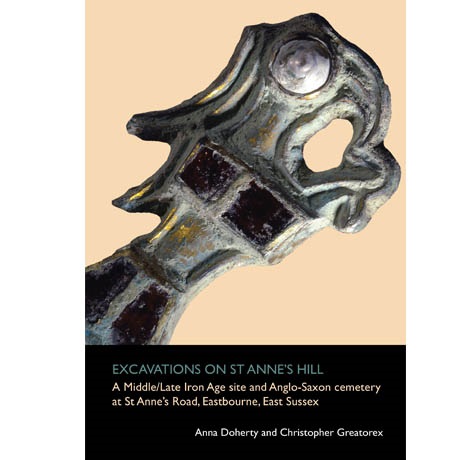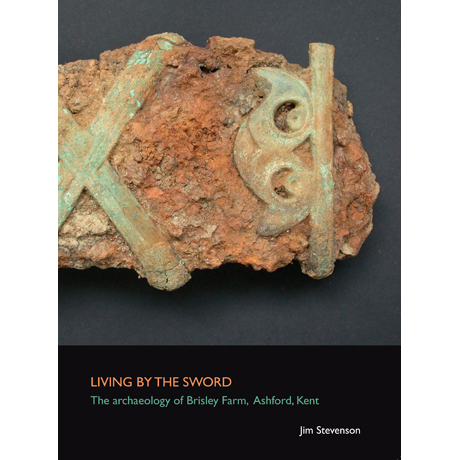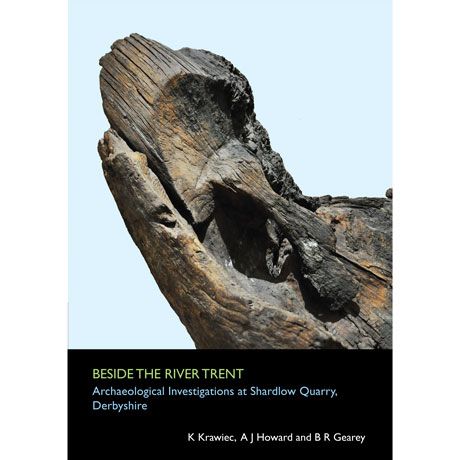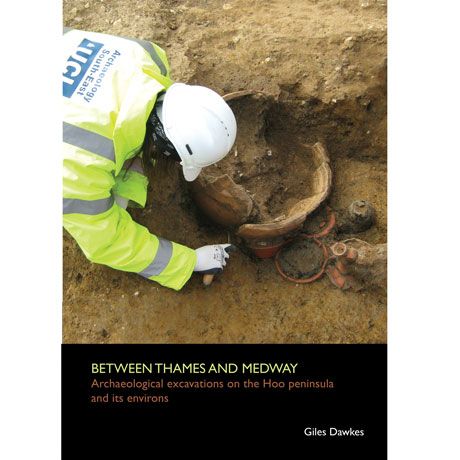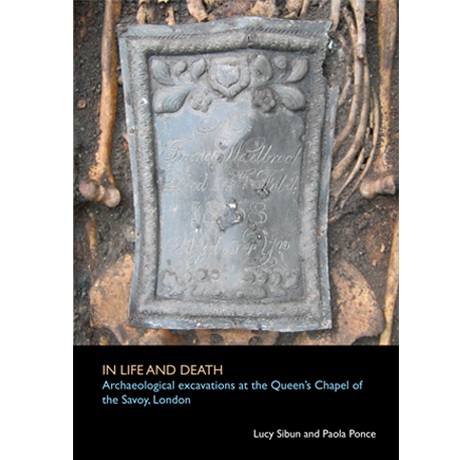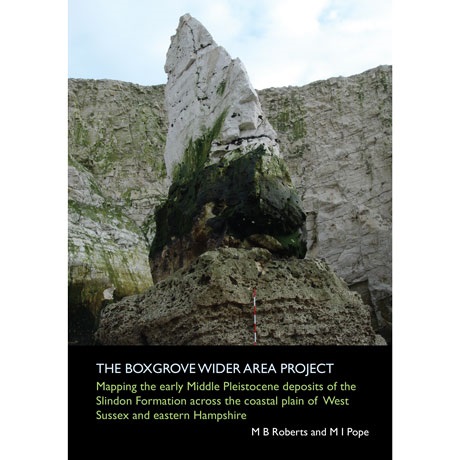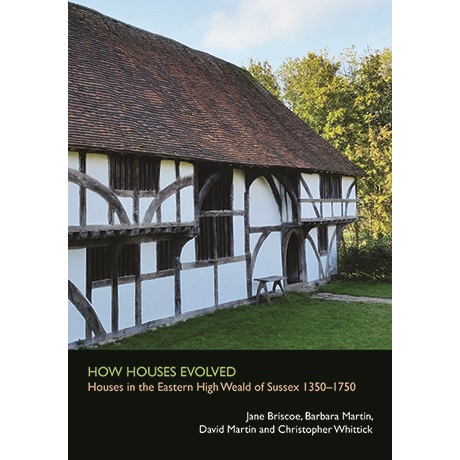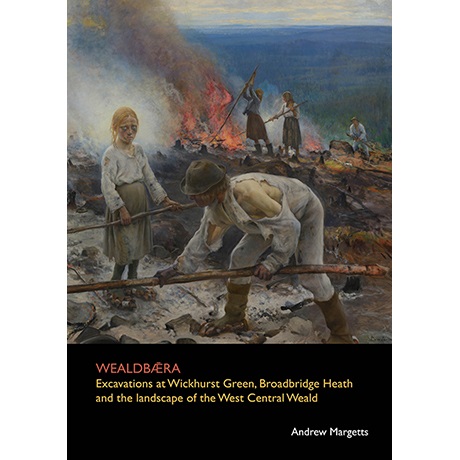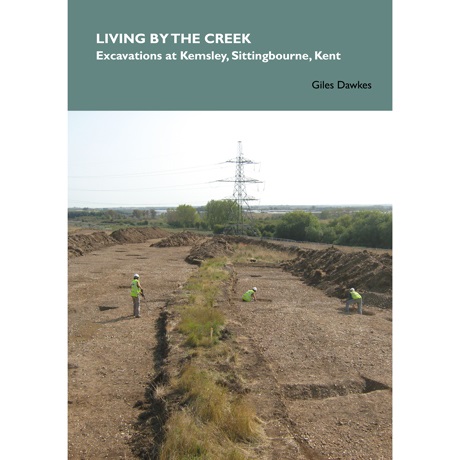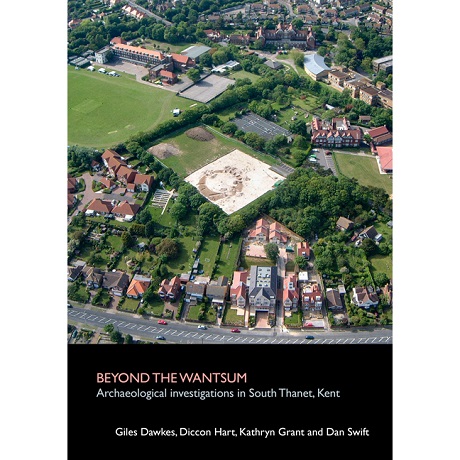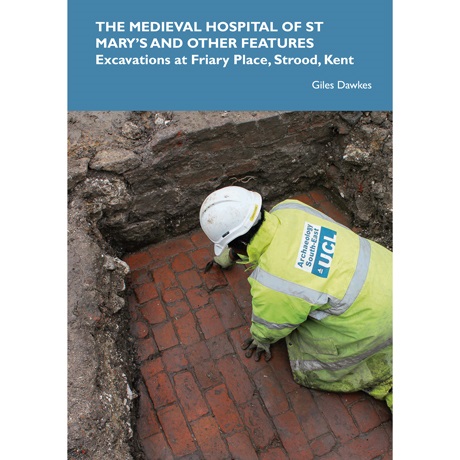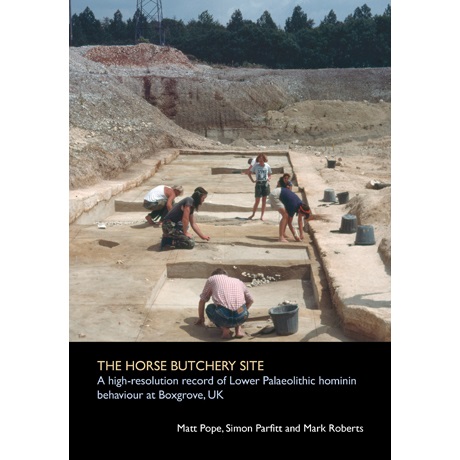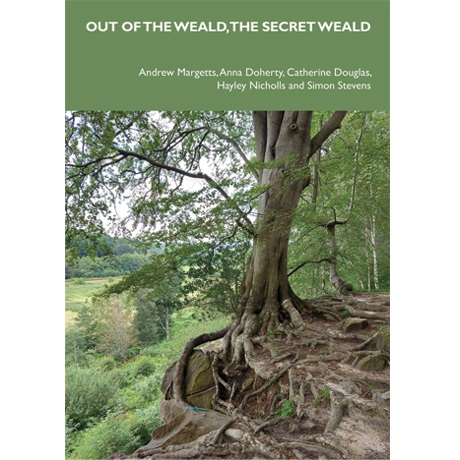Archaeology South East (F31)Archaeology South-East started life as the Institute of Archaeology’s Field Archaeology Unit in the early 1970s. The first purpose of the Field Unit was to train students during the Institute’s field schools in Sussex whilst working on staff research projects in the area. The unit soon became involved in publicly funded ‘Rescue’ archaeology, becoming the regional unit responsible for the archaeology of Sussex. As the 'Sussex Archaeological Field Unit' it undertook a series of important field projects in the 1980s (including work at Boxgrove Quarry, Roman villas at Bignor and Barcombe, and on the Brighton By-pass). In the 1990s the unit became increasingly involved in commercially funded projects. Operating as 'Archaeology South-East', and re-structured to meet the exacting standards of the private-sector we have become one of the largest and most effective contract archaeology teams working in Southern England. By 2012 the team had completed nearly 3000 commercial projects for a wide variety of clients. In May 2013 Archaeology South-East was expanded to absorb the former Essex County Council Field Archaeology Unit, involving the transfer of all staff, projects and facilities. The Essex County Unit had, like its Sussex counterpart, been involved in rescue and contract archaeology since the 1970s. The transferring staff had been responsible for a string of major archaeological projects throughout East Anglia, such as the excavation of the Roman towns at Heybridge and Chelmsford. FOR ALL QUERIES PLEASE USE THE CONTACT TABS FOUND IN EACH OF THE INDIVIDUAL COURSES/CONFERENCES AND PRODUCTS, PLEASE ONLY CONTACT THE ONLINE STORE DIRECTLY IF YOU ARE EXPERIENCING PAYMENT DIFFICULTIESF31 A View From The EdgeDescriptionA View From The Edge: Archaeological Investigation on the Manhood Peninsula, Selsey for the Medmerry Managed Realignment Scheme. Between 2010-2013, the Environment Agency undertook the managed realignment of the coastline at Medmerry. The project is the largest open-coast flood relief scheme undertaken in Europe and impacted on upwards of 60ha of landscape with rich archaeological potential. The opportunity for archaeological research offered by the scheme has provided a window into the evolution of this distinctive coastal landscape from the earliest period of archaeologically visible human settlement in the Bronze Age through to the modern era. The geoarchaeological and palaeoenvironmental programme produced a significant sediment archive, an important contribution to the study of the Manhood Peninsula. Important prehistoric archaeology was uncovered including a Mesolithic flint assemblage, partly from an in situ knapping site, and five burnt mounds, radiocarbon dated to the Early-Middle Bronze Age tranisition, recorded in probable lagoon-edge locations. These are succeeded by Middle Bronze Age settlement and more widepsread Late Bronze Age activity, with two settlements within a localised co-axial field system. Historic period remains include Saxon settlement, with boundaries of possible building plots, and a series of wooden structures within the estuarine or lagoon silts, including major conserved wooden structures of 13-14th century date, interpreted as several phases of large fish weir. Detailed recording of six pillboxes and two gunnery range buildings, together with a large assemblage of expended ordnance, allowed for a detailed consideration of the coastal defences installed during World War II.
For all queries in regards to this product please contact the following :-
F31 Between The Twittens: From Iron Age Origins To Burh & Borough. Excavations in Lewes, East SussexDescriptionThis volume presents the findings from four urban excavations undertaken within the historic core of Lewes in East Sussex, between 2004 and 2008. It charts Lewes’ evolution from a Late Saxon burh (fortress) to a thriving high medieval urban centre at the head of the newly formed Rape of Lewes, and on through late medieval and early post-medieval times as County Town of Sussex, placing the archaeology of Lewes within the wider historical context of English settlements and towns. This volume presents the findings from four urban excavations undertaken within the historic core of Lewes in East Sussex, between 2004 and 2008. It charts Lewes’ evolution from a Late Saxon burh (fortress) to a thriving high medieval urban centre at the head of the newly formed Rape of Lewes, and on through late medieval and early post-medieval times as County Town of Sussex, placing the archaeology of Lewes within the wider historical context of English settlements and towns. The earliest activity was of a developing Middle to Late Iron Age riverside and upland agricultural settlement, with evidence for its subsistence economy, metalworking and infant burial practices. The settlement began with curvilinear enclosures and expanded uphill ending with a more formalised, linear division of the landscape. A large Late Saxon feature recorded on the western side of St Nicholas Lane is interpreted as a possible element of the burh fortifications and if so, presents the first archaeological remains of the fortress thought to occupy the uppermost part of the town, and provides the location of the eastern limits of the burh. Insights into the lives of Lewes’ Late Saxon and medieval inhabitants, their diet, agriculture and economy has come from numerous deep quarry and refuse pits which yielded huge assemblages of finds including pottery, animal and fish bones, plant remains and artefacts. The remains of several medieval buildings were recorded, alongside ex situ finds of clay and stone building materials. By the late 18th- to 19th-century, significant development and expansion was underway in Lewes, reflected on two of the sites by an abundance of brick-built remains F31 Iron Age Settlements on the Chalkland Edge: Excavations in Surrey and HampshireDescriptionThis volume presents the findings from four archaeological excavations carried out by Archaeology South-East between 2002 and 2007, on sites located near the western limits of the downland landscapes in southeast England. Together, these sites offer evidence of occupation from the Bronze Age through to the Late Iron Age and Romano-British periods, with a particular emphasis on the Middle to Late Iron Age. Situated on or near the lower chalk slopes of the western North and South Downs, the sites lie close to the Wessex region—an area well known for its Iron Age upland settlements and agricultural practices. Among them, the Hawks Hill House site stands out for its large pits, interpreted as grain-storage features, which closely parallel similar structures found in Wessex. The analysis explores the potential ritual significance of post-use deposition in these pits, including links to feasting and ceremonial activity. The concluding discussion considers the broader implications of grain storage practices, their social and symbolic roles, and reflects on recent debates around the interpretation of ritual discard and alternative frameworks for understanding Iron Age lifeways. F31 Taming The TideDescriptionTaming the tide: The evolution, exploitation and occupation of Lydd from the Bronze Age to the modern day. From shifting shorelines to rich pastures, the long-running archaeological excavations at Lydd Quarry on the Dungeness Peninsula (1991–2018) made discoveries that trace the dramatic evolution of this coastal landscape, from its Bronze Age origins through Roman industry and medieval revival, through to the post-medieval period.
In its earliest phase, Bronze Age communities navigated an unfamiliar and rapidly transforming terrain. Centuries later, Roman pastoralists and salt producers took advantage of its rich natural resources—until rising sea levels in the mid-Roman period flooded large portions of the Dungeness Peninsular, pausing human activity for hundreds of years. Only in the medieval period did activity re-emerge, when drainage and reclamation of the landscape provided a fertile environment on which to graze livestock in an emerging fieldscape that developed into the post-medieval period.
While this volume focuses primarily on the East Sussex portion of the excavations, it also draws insights from neighbouring Kent, weaving together findings from the largest archaeological investigations ever undertaken within Romney Marsh. By contextualising this developer-funded work within broader historical and geographical research, the volume offers not just a record of discoveries—but a compelling backbone for future research.
For all queries in regards to this product please contact the following :- F31 The Honour & Safety Of The Realm: The Elizabethan & Later Harbour Works At Dover Western Docks KentDescriptionBetween 2015 and 2018 Archaeology South-East conducted archaeological and geoarchaeological investigations at Dover Western Docks on behalf of Dover Harbour Board. This monograph marks the culmination of over seven years of post-excavation work and details the evolution of Dover’s inner harbour during the post-medieval and modern periods. Remains encountered at the site included two woolly mammoth teeth, deposits probably dating to the early to late medieval periods, high medieval to post-medieval mudflats and part of the nationally important Elizabethan harbour works attributed to Thomas Digges. Later remains at the site included piling works designed by the famous military engineer Bernard de Gomme, an 18th-century timber groyne, evidence of the 19th- and 20th-century promenade with housing and dockyards as well as features related to World War II. F31 The Horse Butchery SiteDescriptionThe Horse Butchery Site: A high resolution record of Lower Palaeolithic hominin behaviour at Boxgrove, UK. The Boxgrove Horse Butchery Site represents a significant discovery, preserving a single landsurface associated with tight clusters of flint artefacts and the butchered remains of a large female horse, sealed under intertidal silts. This volume presents the first integrated analysis of this exceptional site. It documents the evidence used to reconstruct activities including biface manufacture, defleshing of bones, marrow extraction and the production of bone tools. The Boxgrove Horse Butchery Site began as a small test pit, designated GTP17, excavated in 1988. It quickly became clear that the site represented a significant discovery, preserving a single landsurface associated with tight clusters of flint artefacts sealed under intertidal silts. As excavations continued during the summers of 1989–91, it became apparent that this landsurface also preserved the butchered remains of a large female horse. It provided the first well-preserved and combined accumulation of artefacts and faunal remains from Boxgrove, representing an opportunity to study what appeared to be a hominin group working together to butcher a single animal. This volume presents the first integrated analysis of this exceptional site. It documents the evidence used to reconstruct activities including biface manufacture, defleshing of bones, marrow extraction and the production of bone tools. Detailed analysis of site formation processes suggest the entire episode possibly occurred within a single day, with the scatters of flint and bone sealed quickly within fine intertidal silts. These silts not only preserved the spatial integrity of the activity at the site, but also sealed a record allowing behaviour of an entire hominin group, including social interactions, to be brought under direct study. While the sediments at Boxgrove are renowned for their preservation of hominin behaviour at landscape scale, the Horse Butchery Site represents a vivid and intimate picture of group activity at human scales of time and space. With the publication of this volume we present an important case study for Palaeolithic archaeology, one through which aspects of Middle Pleistocene hominin subsistence, ecology, technology and social behaviour can be explored. For all queries in regards to this product please contact the following :-
F31 The Management Of the River Stour From The Medieval To Modern Periods: Its Waterfronts & The Development Of SandwichDescriptionThe fortunes of Sandwich and its environs have been inextricably linked to the river throughout the town’s history. During the medieval and post-medieval periods there were remarkable changes within the landscape. This was influenced by the evolution of coastal shingle barriers and lead to the decline of Sandwich as a port. By the 15th century the River Stour, and consequently Sandwich itself, was deteriorating rapidly. Archaeology South-East was commissioned by the Environment Agency to undertake an archaeological watching brief, targeted investigations and historic building recording during the Sandwich Town Tidal Defence Scheme, both in and around the town. The scheme involved the construction off 14km of floodwalls and embankments along the Stour, from Richborough to Broad Salts. This volume details the findings of the investigations, which revealed evidence for the management of the river both within and outside the town. Evidence for the progression of the town’s waterfront further into the river corroborates earlier archaeological findings, and palaeoenvironmental data contributes to the wider body of evidence for the evolution of the Stour, which is currently sparse for the medieval and post-medieval periods. Finds included artefacts of Dutch origins, which might hint at trade with Low Countries or Dutch people within the settled population, and evidence giving insights into Sandwich’s local fishing economy. The results demonstrate that, while the new flood barriers comprise the most recent attempt at flood defence, they are part of a long history of human management of the Rover Stour, stretching back at last as far as the 12th century. F31 Two Millennia Of Marshside Settlement: Excavations At Pococks Field, Eastbourne, East SussexDescriptionThis marshside excavation, at the juncture of the South Downs and Willingdon Levels, revealed evidence that it was home to communities that exploited and interacted with these two different landscapes from the early prehistoric to the post-medieval period. The earliest activity was a probable Bronze Age inhumation burial, interred on a conspicuous chalk promontory, with further cremation burials added in the Middle Bronze Age. The first sustained settlement was a substantial Early/Middle Iron Age enclosure, where large-scale saltworking was undertaken as a specialist activity. A subsequent Middle/Late Iron Age settlement, occupied with alteration until the Late Roman period, acquired a specialist crop-processing function, probably when a villa was located to the immediate north in the Early Roman period. In the later 6th–7th centuries, sunken-featured buildings and a post-built hall were constructed. This is the long-anticipated, first identification of Early Anglo-Saxon settlement at Eastbourne, and represents the second largest settlement of the period identified in East Sussex. By the 8th century, this was abandoned, and the site was bisected by a new holloway, re-establishing the connection between the South Downs and the marsh of the Willingdon Levels. A small ‘croft and toft’ type farmstead occupied the site in the high medieval period, before a substantial masonry farmhouse was built in the mid 15th century. In the 16th century, this was converted from an open hall to a fully floored building. The considerable artefact assemblage recovered included over 29,000 sherds of Iron Age pottery, one of the largest fired clay assemblages associated with prehistoric saltworking in southern England, and sufficient post-Roman pottery to establish a fabric type-series for the wider local area. For all queries in regards to this product please contact the following :- |
London's global university


